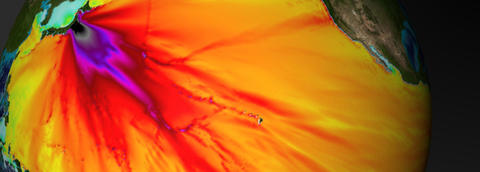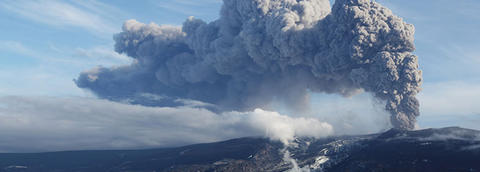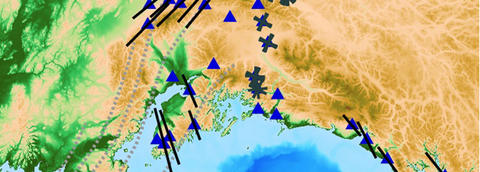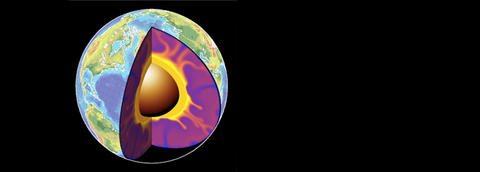Most of the Earth’s geological and geophysical activity occurs because our planet is cooling to space, thereby inducing currents of cold sinking and hot rising material, otherwise known as convection. Convection in the Earth’s mantle is the engine of plate tectonics and gives rise to the creation of ocean basins and continents; similarly, convection in the Earth’s liquid-iron outer-core powers the geomagnetic field. Understanding how the Earth has been evolving in this way is one of the many aspects of studying the physics of the Earth’s interior. Geophysical research is fundamentally multidisciplinary, and here at Yale we employ a variety of observational, experimental, and theoretical approaches to investigate the structure and dynamics of the Earth from atomic to global scale.
Seismology uses elastic waves generated by natural earthquakes as well as controlled sources to probe the internal structure of the Earth. Seismic wave propagation through the mantle, for example, is sensitive not only to the hot and cold regions that induce buoyant convection, but also to the fabric of mantle rock sheared by convection (known as seismic anisotropy). Research on seismic anisotropy, which yields insight into mantle flow, is complementary to laboratory work on rock deformation at deep-earth conditions. The structure and dynamics of the crust and mantle is elucidated using temporary deployments of broadband seismometers in regions of tectonic interest, such as subduction zones. The seismic structure of crust imaged by active-source seismology, on the other hand, can constrain parental mantle processes such as convection and partial melting in the past and present, providing a robust geophysical perspective to igneous petrology.
Mineral and rock physics at Yale uses theory and laboratory experiments to study the properties of rocks and other planetary materials at great pressures and temperatures. Information from these experiments is used to infer the properties of materials deep within the Earth, such as elasticity, deformability and fabric of material, and melting, all of which determine the response of deep-Earth materials to cooling, stresses, magnetism, and other activity assocated with the dynamics of the deep Earth.
Geodynamics uses mathematical theories, laboratory experiments, and numerical simulation to model the fluid motions of the Earth’s interior that arise from convective forcing. Such models elucidate how the mantle circulates, how tectonic plates are formed, how volcanoes arise, and how the inner and outer core flow and evolve. Continental geology provides observational constraints on the long-term dynamical behavior of the Earth through continental reconstructions, which are used to determine past rates of true polar wander and to understand relationships between supercontinents and mantle convection.
Faculty affiliated with this group include David Bercovici, David Evans, Shun-ichiro Karato, Jun Korenaga, Maureen Long, Jeffrey Park, Mark Brandon, and John Wettlaufer. We also collaborate on tectonic problems with faculty from Lithosphere and Surface Processes, Geochemistry and Atmosphere, Oceans, Climate Dynamics.




